The pandemic has had a major impact on businesses, especially small ones.
LifeWork, a startup on a mission to make self-employment a more sustainable career path, created the Small Business School Challenge to help. Over 450 MBA students from the top business schools all across America including Yale, Stanford, and Vanderbilt, joined the RingCentral-sponsored virtual event.
In a 48-hour hackathon, students were partnered up with 150+ small businesses to create a solid strategy to pivot through the COVID-19 crisis. The small business owners received support and guidance not only from their MBA team, but also from 100 business mentors and the judges of the competition.
Pssst! Applications are now open for the 2021 SBSC, taking place virtually April 8-10. This event is FREE, so apply today!
We’ve rounded up 10 of those business plans that stood out:
- Fort Orange General Store
- Green Gate Farms: New Farm Institute
- Cuisinett, French Comfort Food
- Smiles Over Somerville
- TFA Signs
- CREATE Community Studios
- Blue Ridge Pizza Co.
- Incasa
- Troy Waterfront Farmers Market
- Julie Allen Bridals
1. Fort Orange General Store: retail
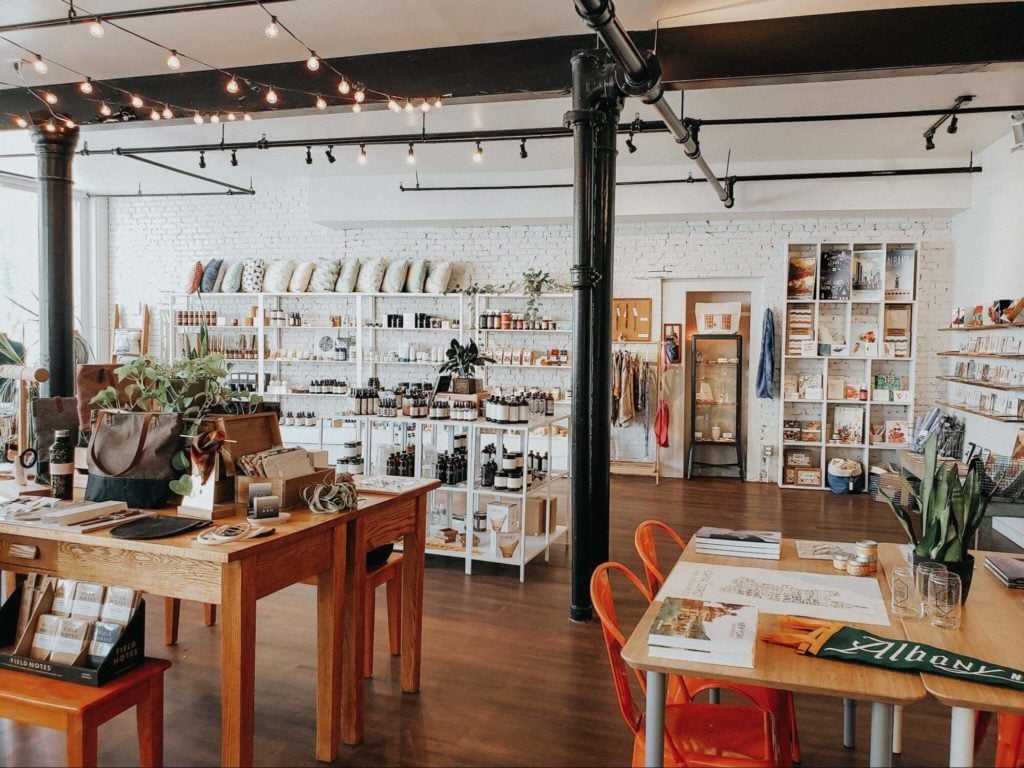
Fort Orange General Store provides a handpicked selection of home goods and gifts, with an emphasis on high quality and great design. It focuses on all things local, showcasing local makers in upstate New York and holding creative workshops for the community in store.
The challenge
Since having to shut their brick and mortar and shifting to strictly online sales, the Fort Orange General Store has seen a drastic decrease in revenue. Most of their income had come from in-store events and sales, both of which aren’t possible anymore because of mandated store closings during the pandemic.
The solution
Expand Fort Orange General Store’s online presence to funnel more traffic to their online store.
Their main focus would be Instagram, where they already have a strong community of over 12,000 followers.
By creating and publishing weekly IGTV videos on Instagram, Fort Orange General Store could keep their consumers connected to the brand while sending them straight to the online store using Instagram’s “Swipe Up” feature.
To further strengthen the connection with their online community, someone from the store would be chosen as a spokesperson for the brand. They’d act as the face of the company and create a more personal connection with the store’s Instagram followers.
Fort Orange General Store’s online expansion would also include creating a blog and a newsletter to engage the community beyond just Instagram. These new online spaces would continue on through and past the pandemic, maintaining online traffic even after the store reopens.
This strategy builds on the trust and loyalty Fort Orange General Store has with their followers, helping with short-term sales growth as well as long-term revenue.
2. Incasa: retail
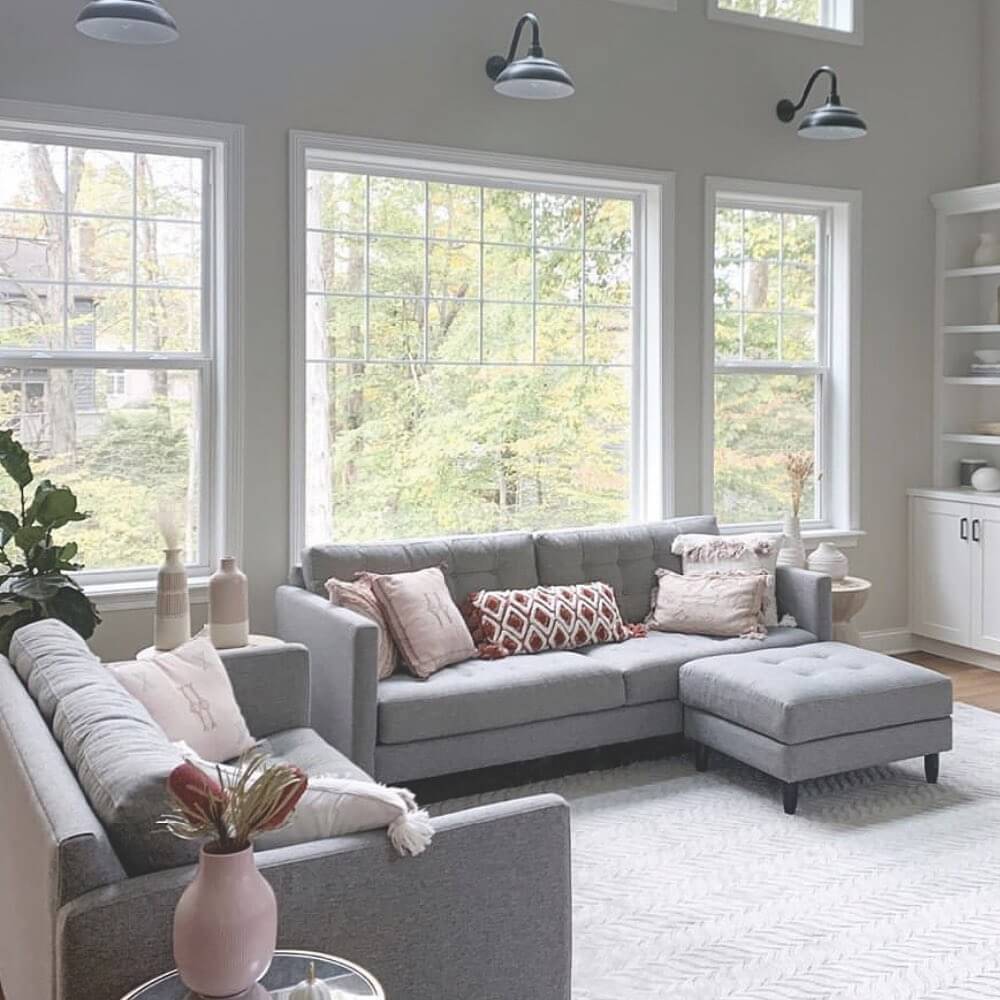
Incasa is a local home decor and furniture store that’s been open for about a year in Astoria, New York. They offer handcrafted products made either locally in Queens or by artisans in Mexico. The founder, Eduardo, goes above and beyond with the in-store experience, offering customers free design advice along with curated products.
The challenge
Due to shutdown measures, Incasa has had to close their brick-and-mortar store. With 90% of their revenue coming from in-store purchases, they need to figure out a strategy to recoup their losses.
The solution
Launch the Feel Good Incasa campaign, a virtual campaign focused on connecting with existing customers to provide a personalized experience and offering Eduardo’s design skills to them virtually.
The Feel Good Incasa campaign is made up of three components.
First, the Virtual Decorating Service would provide customers with tailored design recommendations and product customizations that would bring the most to their home.
A video conferencing tool like RingCentral Video would come in handy with the personalized experience here. Incasa would be able to get a proper look at the room that’s being redecorated, getting a sense of the space and how it fits in with the rest of the home:
Next, the Experience Bundle For Home would be a customized gift set created by Incasa for different experiences, such as date night at home.
Finally, the Sending-Love Gift Project would encourage customers to buy gifts for their friends who would then in turn be encouraged to continue to spread the love.
The Feel Good Incasa campaign is expected to recoup 93% of lost revenue within one month. 40% of the sales are expected to come from existing customers, while 60% would be from new customers.
3. Cuisinett, French Comfort Food: restaurant

Cuisinett is a fast-casual French comfort food restaurant serving the San Francisco Bay Area. Shutdown measures have closed their restaurant, eliminating their dine-in revenue. Interestingly, this has actually led to higher margins due to the restaurant only offering takeout services.
The challenge
With all the limitations around dining in and the uncertainty of how long those measures will be in place for, Cuisinett wants to diversify their business model to expand revenue channels. They’d also like to continue to maintain their current margins.
The solution
Develop an épicerie, a French takeaway grocery items service.
Introducing the épicerie would benefit customers as well as the business itself. Customers would have the chance to enjoy French comfort food at home, and Cuisinett would see even higher profit margins.
Cuisinett could also launch a remote worker lunch initiative. The Bay Area has a large number of remote workers as well as Lunch & Learn events that Cuisinett could provide catering for.
Additional ways to expand their revenue channels would include to form local business alliances for cross-promotion and offer a subscription plan for their shop to capitalize on their loyal customer base.
These efforts combined with optimizing their current website and online experience would bring in a potential 18% increase in earnings. Even in a worse case scenario where dining in doesn’t come back, Cuisinett will still be generating more earnings than they did before the pandemic.
4. Smiles Over Somerville: healthcare practice
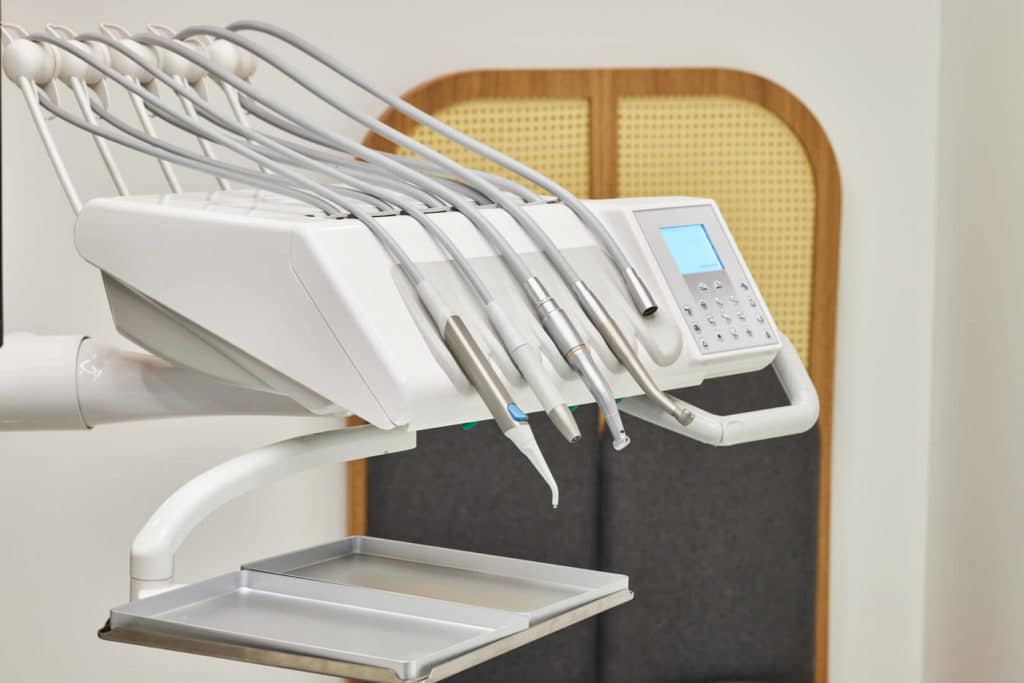
Smiles Over Somerville is a general and cosmetic dentistry practice in Somerville, Massachusetts with eight employees. They accept new patients each month, but the majority of their appointments come from their regular patients.
The challenge
Smiles Over Somerville has only been able to see emergency patients as per state rules. In the past month, they’ve only had two patients come in, which is much fewer than usual.
The practice is concerned that patients feel it’s unsafe to come in to see the dentist, so they aren’t getting the emergency care that they need. Even after businesses reopen, there’s a chance patients might be scared to return.
Smiles Over Somerville has put new stricter cleaning policies and PPE (personal protective equipment) protocols in place that would definitely ease patient concerns, but they haven’t shared these changes with the public yet.
The solution
Engage with current and potential new patients using a detailed roadmap that outlines phased patient outreach per patient group. Also, implement virtual consultations to maximize patient care and health precautions.
Patient groups would be broken down into five categories: emergency cases, emergent high risk, preventative high risk, preventative low risk, and remote or new patients.
Engagement with each group would differ based on their treatment needs and the current pandemic restrictions.
Using a communication tool (like RingCentral) could save you a lot of time here. You’d be able to grab your patient’s contact information, send a message or make a call, all without having to switch between multiple applications. You can even make calls and schedule meetings right in your email platform:
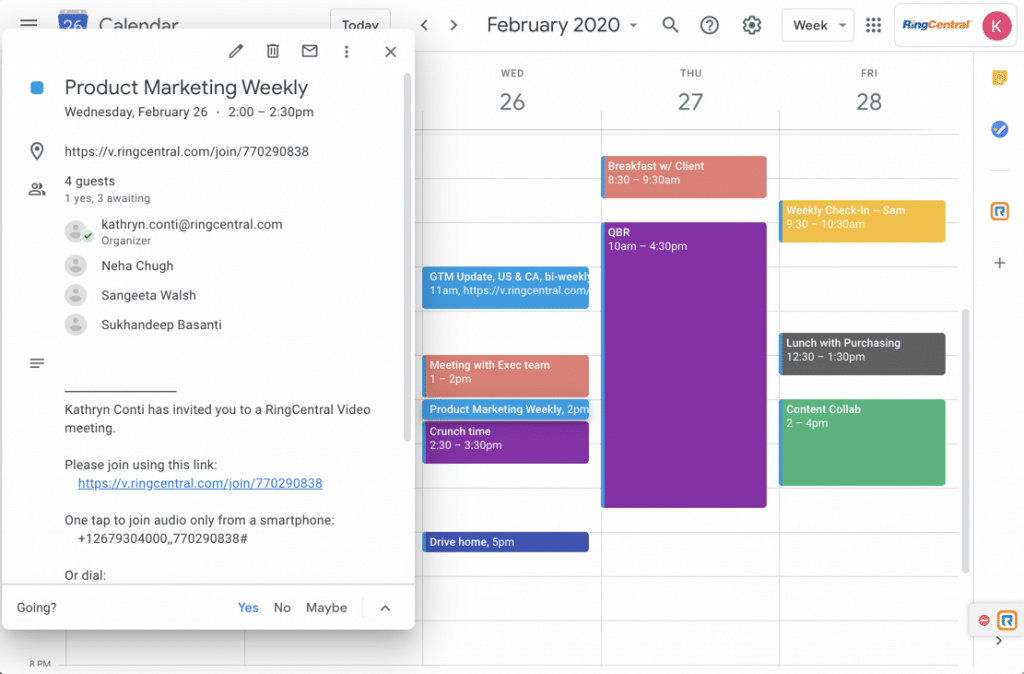
Emergency cases would be contacted first and informed with what qualifies as an emergency. This would let these patients know that they can and should come to the dentist, and why it’s important for them to get immediate treatment.
For emergent high-risk patients, Smiles Over Somerville would reach out to them proactively through phone or email to book them in for appointments. Preventative high-risk patients would then be contacted to give them an approximate time frame of when they’d be able to come in.
Preventative low risk patients would be kept up to date with emails letting them know when the practice will be open in phase 2.
Remote or new patients would be offered virtual consultations so they can be assessed in a safe and contact-free way.
By effectively communicating with patients and combining in-office visits with teledentistry, Smiles Over Somerville can maximize their revenue and number of treatments through their phased reopening.
5. TFA Signs: professional service
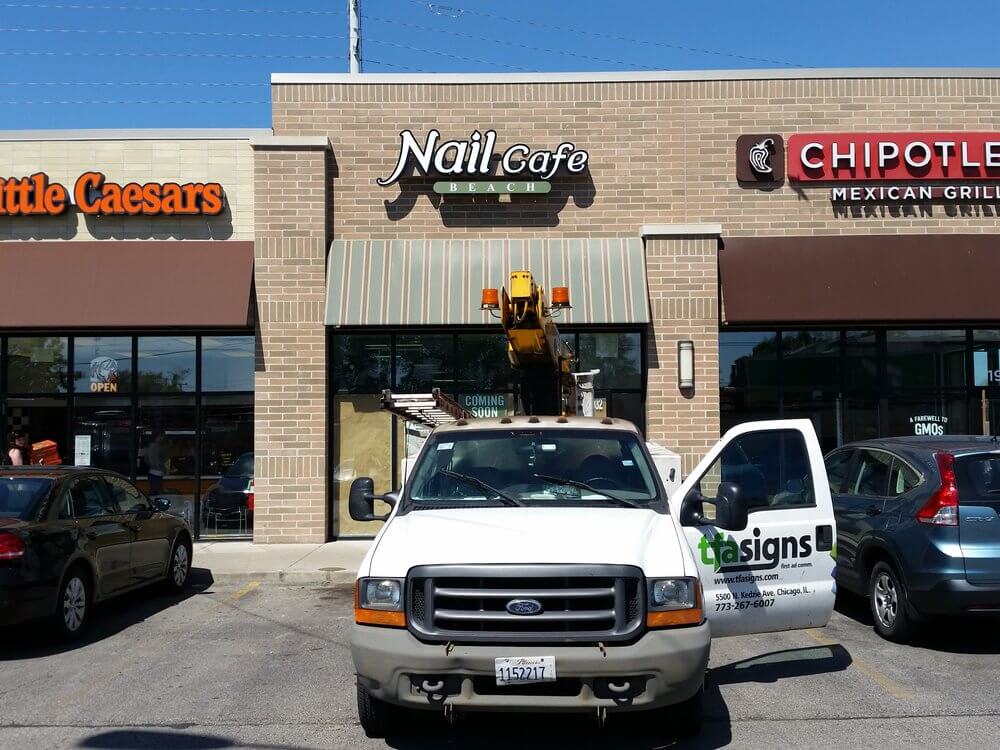
TFA Signs is a Chicago-based full-service sign company that provides a variety of signage for brick-and-mortar stores throughout the Midwest. They handle everything from design and manufacturing to installation and maintenance. TFA Signs’ customers range from mom-and-pop shops to large chain stores.
The challenge
TFA Signs have been hit hard since the pandemic started, seeing a 40% decrease in sales. Most of the customers are either closed for business or simply can’t spare the finances to invest in signage anymore.
The solution
Reposition TFA Signs’ core business to adapt to today’s digital world by providing online marketing services.
To create a foundation for future growth opportunities, TFA Signs could build on their existing relationships with mom-and-pop shops that don’t currently have an online presence.
They would continue providing physical signs but will also offer digital signage as well as other digital marketing services. With a bit of time, each shop would have built up their in-house marketing capabilities.
In the short term, TFA Signs would take advantage of the current need to communicate new policies by providing social distancing signage. They’d also begin offering LED signage that would give mom-and-pop shops the option to have more flexibility as they’ll be able to program the sign’s text themselves.
By pivoting the business in an e-commerce-friendly direction and taking advantage of short-term wins, TFA Signs will be well-positioned both during and after the pandemic.
6. CREATE Community Studios: nonprofit
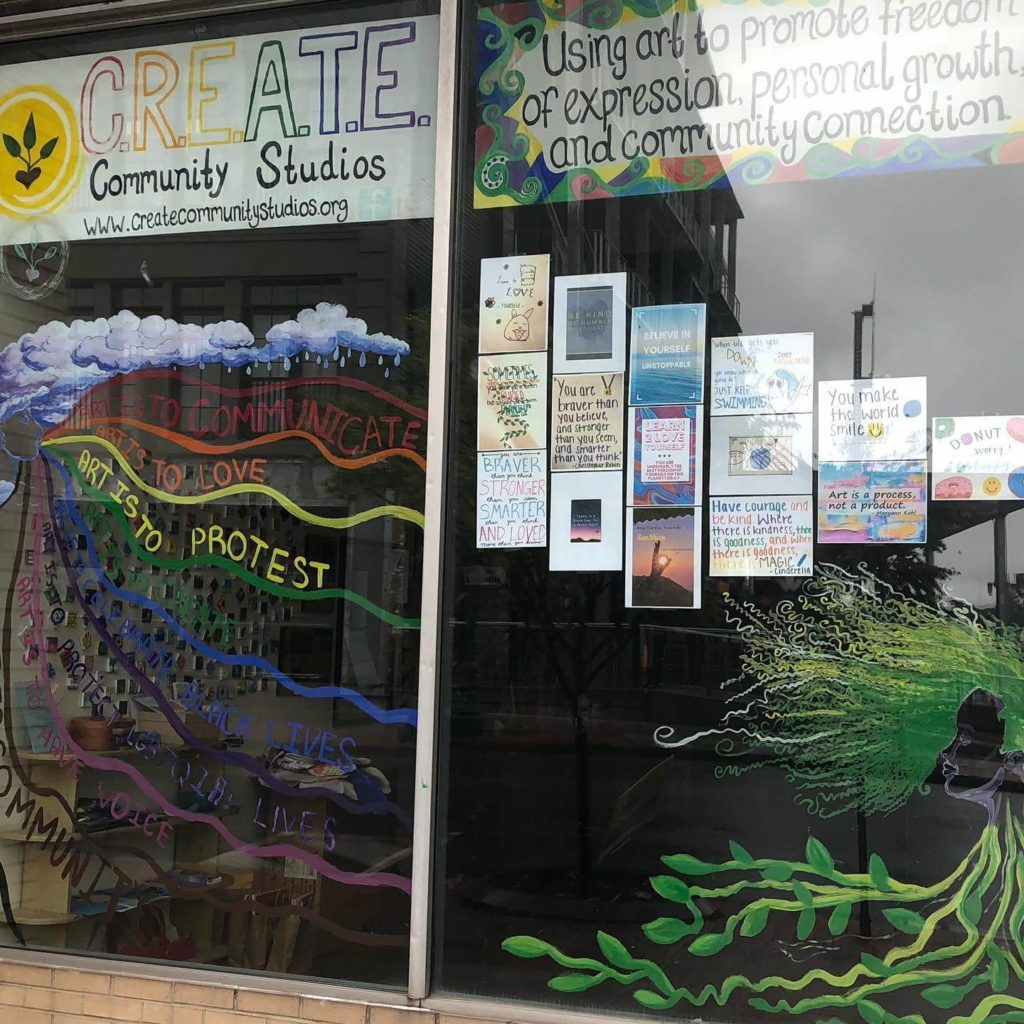
CREATE Community Studios is a small non-profit in New York that fosters community and connections through art. They provide art workshops, community wellness activities, and special events to people of all different ages and backgrounds.
The challenge
The majority of CREATE’s initiatives, like in-studio art workshops or group sessions in the park, happen physically in person. Now that these kinds of gatherings can’t be held due to social distancing restrictions, CREATE needs to find a way to use art to bring people together when the physical sense of community is no longer there.
The solution
Bring art into the home as self care with a curated art supplies box.
CREATE would put together a box of art supplies packed with everything someone would need, including instructions on how to channel their inner creativity and how to relieve stress.
The focus would be to sell these art boxes to companies rather than individuals. Companies who have their entire workforce now working from home are looking for ways to build teamwork remotely and foster creativity.
The art boxes would be themed to make them simpler to market. Examples of themes would be a friendly company logo-painting competition, a show of support for local healthcare workers or even just free play.
Increasing CREATE’s presence on social media as well as offline outlets such as TV and newspapers would be key in getting their message out to more companies. They could also make use of pre-built fundraising platforms such as GoFundMe.
7. Blue Ridge Pizza Co.: restaurant

Blue Ridge Pizza Co. is a family-owned catering food truck based in Charlottesville, Virginia. They specialize in weddings and large-scale catering events, with their mobile wood-fired oven at the center of the experience.
The challenge
With social distancing measures in place, Blue Ridge Pizza Co.’s revenue is down 47% compared to last year because of all the event cancellations. A lack of events also means a lack of word-of-mouth marketing, which the company had always relied on to generate awareness and interest.
The solution
A new experience called “The Chef’s Table” that brings Blue Ridge Pizza Co. to your home.
The Chef’s Table is an oven-side, multi-course dinner at your home for up to 10 people. Customers would have a more personalized dining experience where they can hear from the Blue Ridge Pizza Co. owners themselves as they serve their mouthwatering pizzas.
At the end of the meal, Blue Ridge Pizza Co. would deliver the “Charlottesville Humble Bundle,” a case of additional goods from a wide variety of local small businesses. This partnership would strengthen Blue Ridge Pizza Co’s ties with local businesses while also providing these boutique businesses with a chance to reach new customers.
The Chef’s Table initiative is one that can be quickly launched and benefits not only Blue Ridge Pizza Co. but the broader Charlottesville community.
8. Green Gate Farms: New Farm Institute: nonprofit
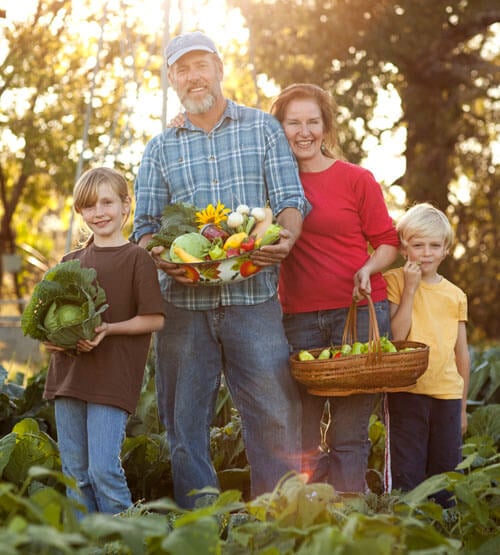
Green Gate Farms was created in 2006 in an underserved neighborhood in East Austin, TX. The New Farm Institute is their nonprofit arm with a mission to educate, assist, and inspire a new generation of sustainable farmers.
The challenge
In-person programming has been a major part of Green Gate Farm’s offerings but they’ve had to cancel everything due to restrictions around gatherings. Without these programs, they’ve lost 80% of their revenue.
The solution
Launch the “Farm to Home Kit” that would recreate the experience of visiting the farm, right in your own home.
It would be an educational experience that relieves parents and children of boredom while they learn about sustainable farming practices.
Each kit would include seeds for growing, Texas soil, and a digital component. Customers would gain access to a thriving Facebook community of over 5,000 where they can share their farming successes or get advice for their green thumb troubles.
Along with the launch of the kit, Green Gate Farms would update their branding and online spaces to boost the Farm to Home Kit’s appeal.
Based on their existing audience, the target would be to sell 700 kits. Those sales would make up for the farm’s lost revenue from in-person programming.
9. Troy Waterfront Farmers Market: retail

The Troy Waterfront Farmers Market is a nonprofit organization that hosts a producer-only marketplace featuring locally made products. Their client base is made up of 120 vendors and the market brings up to 15,000 customers each week.
The challenge
Restrictions around COVID-19 have prevented the Troy Farmers Market from happening as it usually does in their downtown space. Instead, the market has been placed in a parking lot that only allows for 25 vendors. Many of their other vendors have moved to offer their goods through an online portal.
The solution
Implement a subscription-based meal box program to recreate the experience of the market at home.
Each meal box would be made of fresh produce from local farms and would be customizable based on customer dietary requirements like vegan, gluten-free, kosher and more.
The Troy Farmers Market would market these boxes to their online community, leveraging social media to attract a larger customer base.
The bulk of their meal box promotion on social media would be in partnership with local chefs. Each Sunday, a chef would open up a meal box on Instagram live and would then make a meal out of all the items inside of the box. They’ll then post the recipe on their social media, promoting the meal box as well as their own restaurant.
With the goal of fully recreating the whole Troy Farmers Market experience, customers will be given social media links for artists and activities that are normally part of the market.
Farmers markets are beloved because they partner farmers with consumers, but these core aspects have taken a hit with all of the supply chain issues that have arisen during the pandemic.
The subscription meal box program solves that supply chain problem while also supporting sustainable farm-to-table eating habits. It’s also a program that the Troy Farmers Market can continue to offer for years to come.
10. Julie Allen Bridals: retail
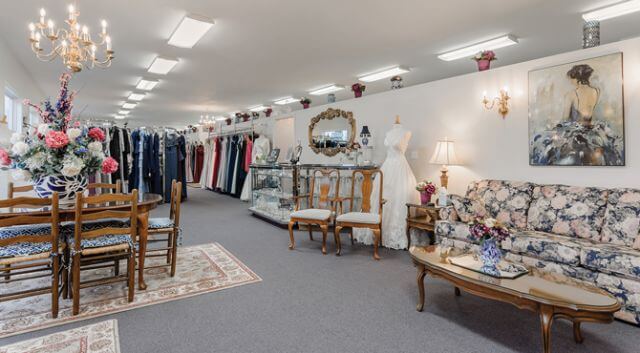
Julie Allen Bridals is an independent bridal boutique that was founded 50 years ago. They’re best known for their warm, personalized service and great bridal gown collection.
The challenge
About 70–80% of Julie Allen Bridals’ revenue comes from selling bridal gowns to their customers who are mostly located close to the store and make multiple visits during the bridal gown purchasing process.
Without e-commerce as an option, the boutique needs to find a way to adapt to current safety measures while still providing an exceptional in-store experience.
The solution
A three-pronged approach to adapt Julie Allen Bridals’ current gown purchasing process to new COVID-19 safety measures, ensuring that the boutique keeps its revenues flowing.
The first approach would be to minimize the amount of time customers spend in store, reducing customer and staff exposure. Any gaps from fewer customer appointments would be filled in with technology.
The second approach would be to reduce Julie Allen Bridals’ exposure to losses by adjusting their inventory mix and negotiating revised terms with their supplies.
The final approach would be to improve the in-store experience through value-added services while constantly collecting feedback from customers.
With so many adjustments needing to be made, a hybrid approach involving technology would help maintain the amazing in-store experience Julie Allen Bridals is known for.
For example, rather than a bride-to-be coming in just for a measuring appointment, she can use an app that is able to accurately measure her dress size. The boutique would then use those measurements to prepare inventory accordingly so that the bride-to-be spends less time in-store once she finally does come in.
Other adjustments would include video conferencing tools installed around the boutique for family and friends to still be part of the experience even when they can’t physically be there, as well as touchscreen catalogues so that brides can browse through gowns without actually touching all of them.
By moving forward with this hybrid approach of combining technology while still maintaining the in-store experience, Julie Allen Bridals can continue to make brides’ dreams come in a safe and worry-free environment.
Want to join the Small Business School Challenge?
Small businesses are an incredibly important part of local communities, and it’s a challenging time for them.
The Small Business School Challenge partnered MBA students up with many more small businesses than we’ve listed here, along with details about each of their strategies. Each type of small business has unique needs, so there are a ton of interesting business plans to browse through!
And remember, you can sign up to take part in the second installment of this series in September! (Keep it locked here—more details soon!)
Originally published Aug 10, 2020, updated Jan 30, 2023





